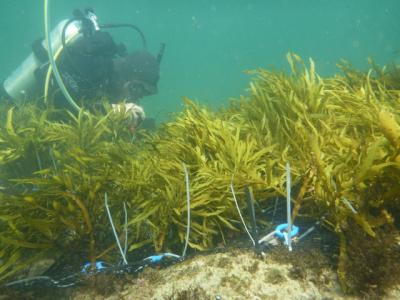 |
| Researcher tying P. comosa plants to the sea floor. |
Giant seaweeds like P. comosa attach to the sea floor with their aptly named holdfasts. They don’t have a root system that you can bury in soil like you would if you were planting a tree. Therefore, to reestablish the P. comosa colony, the plants had to be tied to mesh matts with cable ties. In order to determine whether that procedure itself was overly traumatic, some of the plants were removed and then tied down in their original habitats. Other plants were left completely undisturbed.
No comments:
Post a Comment